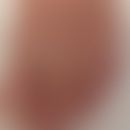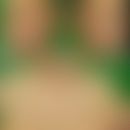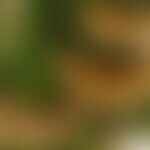DefinitionThis section has been translated automatically.
Ganoderma lucidum is a fungus from the Ganodermataceae family. It is probably found all over the world, but mainly in Mediterranean and temperate zones. In Europe, the fungus can be found as far south as Scandinavia. In Germany, the shiny lacquer mushroom is irregularly scattered everywhere.
In China the mushroom is called Lingzhi, in Japan the name for the Ganodermataceae family is Reishi or Mannentake.
OccurrenceThis section has been translated automatically.
The shiny lacquer mushroom is a coarse mushroom with a cap about five to 20 centimetres high, which sits on a (usually) lateral stalk. The annual fruiting bodies are found on tree stumps, roots or at the base of the trunk of living host trees. The cap of the fruiting body is about one to three centimetres thick and covered with a yellowish, later reddish (to reddish-brown or reddish-black) darkening resin layer. The edge of the mushroom is white, the underside consists of a whitish layer of pores, with about four to five pores per millimeter. The distinct stipe (sometimes formed only as a stalk-like base) is reddish-brown to almost black and shimmers purple.
The species Ganoderma lucidum is often equated with the medicinal mushroom Reishi or Lingzhi known from TCM. However, the latest studies have shown that the traditional medicinal mushroom is a different, related species. The shiny polypore is not an edible mushroom and is insignificant as a wood pest.
Spectrum of actionThis section has been translated automatically.
In East Asia, the mushroom is used as a remedy. The mushroom has probably been used as a tonic in China for thousands of years. Therapeutic applications are often aimed at strengthening the immune system and liver and stimulating the metabolism. The therapeutic benefits of preparations containing G. lucidum for the treatment of various ailments or diseases are supported by evidence in the literature (Paterson RR (2006) Ganoderma - a therapeutic fungal biofactory. Phytochemistry 67: 1985-2001). Many of the chemical substances thought to be responsible are unknown.
Due to its frequent use as a medicinal remedy, especially for neurotic disorders and as a tonic (Paterson RR 2006), G. lucidum is also cultivated as a cultivated mushroom. The Chinese name Ling Zhi means "spirit plant", other common Chinese names are "mushroom of immortality", "ten thousand year mushroom", and "herb of spiritual power". It is also regarded as the "king of medicinal herbs" in China and is used as a medicinal mushroom in traditional Chinese medicine. There it is considered to be on a par with ginseng (Panax ginseng).
Ganoderma lucidum polysaccharide (GLP) is a natural antioxidant without toxic side effects that can counteract UVB-induced fibroblast photoaging. GLP can inhibit UVB-activated protein kinase A (PKA) and mitogen-activated protein kinase(MAPK) signaling pathways. GLP also protects mitochondria from UVB damage and inhibits the production of reactive oxygen species(ROS). UVB-induced cyclic adenosine monophosphate (cAMP) can also be inhibited (Hu S et al. 2019).
LiteratureThis section has been translated automatically.
- Krieglsteiner GJ (ed.): The large fungi of Baden-Württemberg. Volume 1: General part. Stand fungi: gelatinous, bark, spiny and pore fungi. Ulmer, Stuttgart 2000, ISBN 3-8001-3528-0.
- Breitenbach J et al. (1986) Fungi of Switzerland. Contribution to the knowledge of the fungal flora of Switzerland. Volume 2: Heterobasidiomycetes (gelatinous fungi), Aphyllophorales (non-leaf fungi), Gastromycetes (abdominal fungi). Mycologia, Lucerne 1986, ISBN 3-85604-020-X.
- Hu S et al. (2019) Ganoderma lucidum polysaccharide inhibits UVB-induced melanogenesis by antagonizing cAMP/PKA and ROS/MAPK signaling pathways. J Cell Physiol 234:7330-7340.
- Paterson RR (2006) Ganoderma - a therapeutic fungal biofactory. Phytochemistry 67: 1985-2001
- Seweryn E et al. (2021) Health-Promoting of Polysaccharides Extracted from Ganoderma lucidum. Nutrients 13:2725.
- Wachtel-Galor S et al. (2011) Ganoderma lucidum (Lingzhi or Reishi): A Medicinal Mushroom. In: Benzie IFF, Wachtel-Galor S, editors. Herbal Medicine: Biomolecular and Clinical Aspects. 2nd edition. Boca Raton (FL): CRC Press/Taylor & Francis; Chapter 9. available from: https://www.ncbi.nlm.nih.gov/books/NBK92757/




